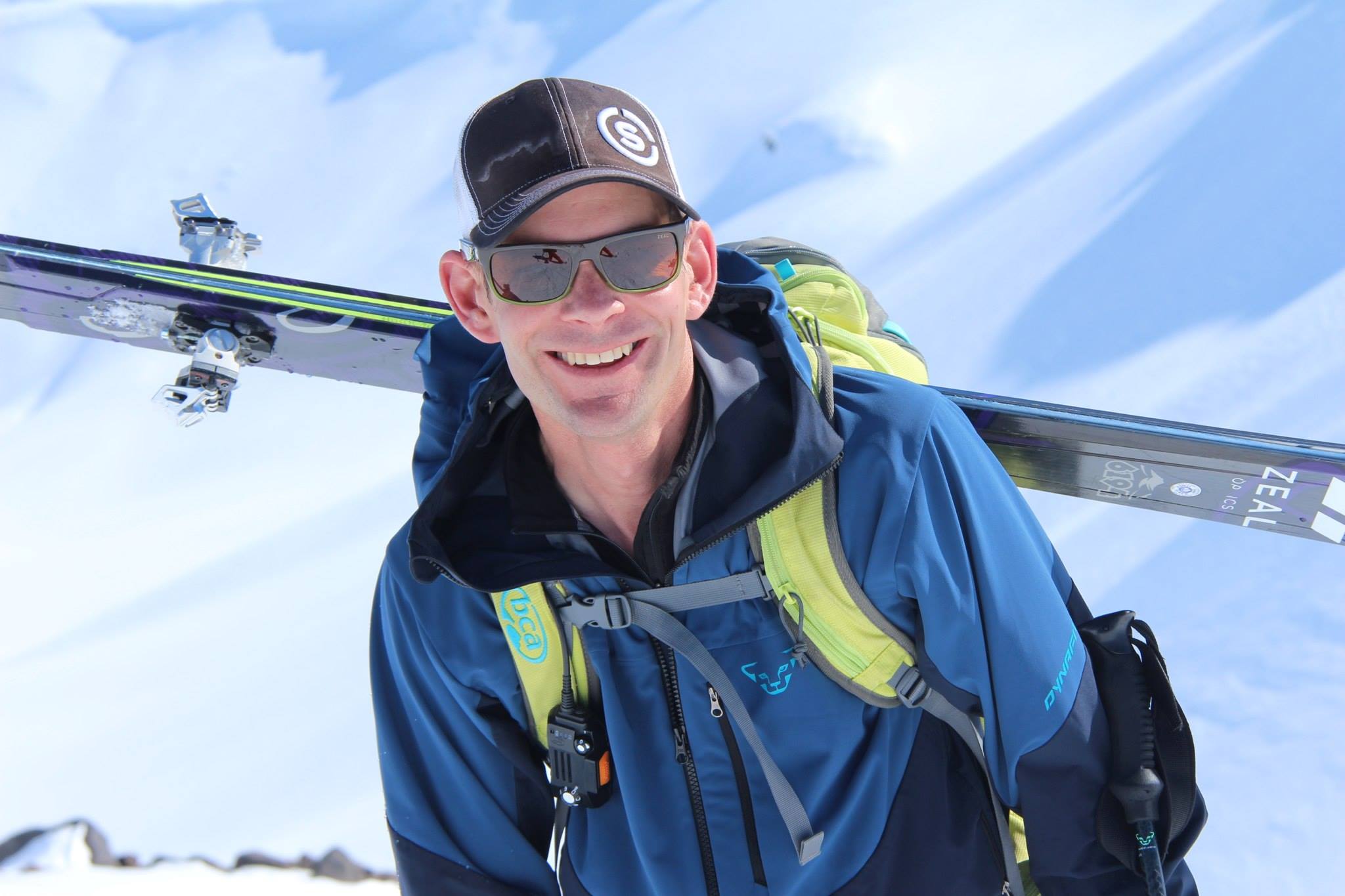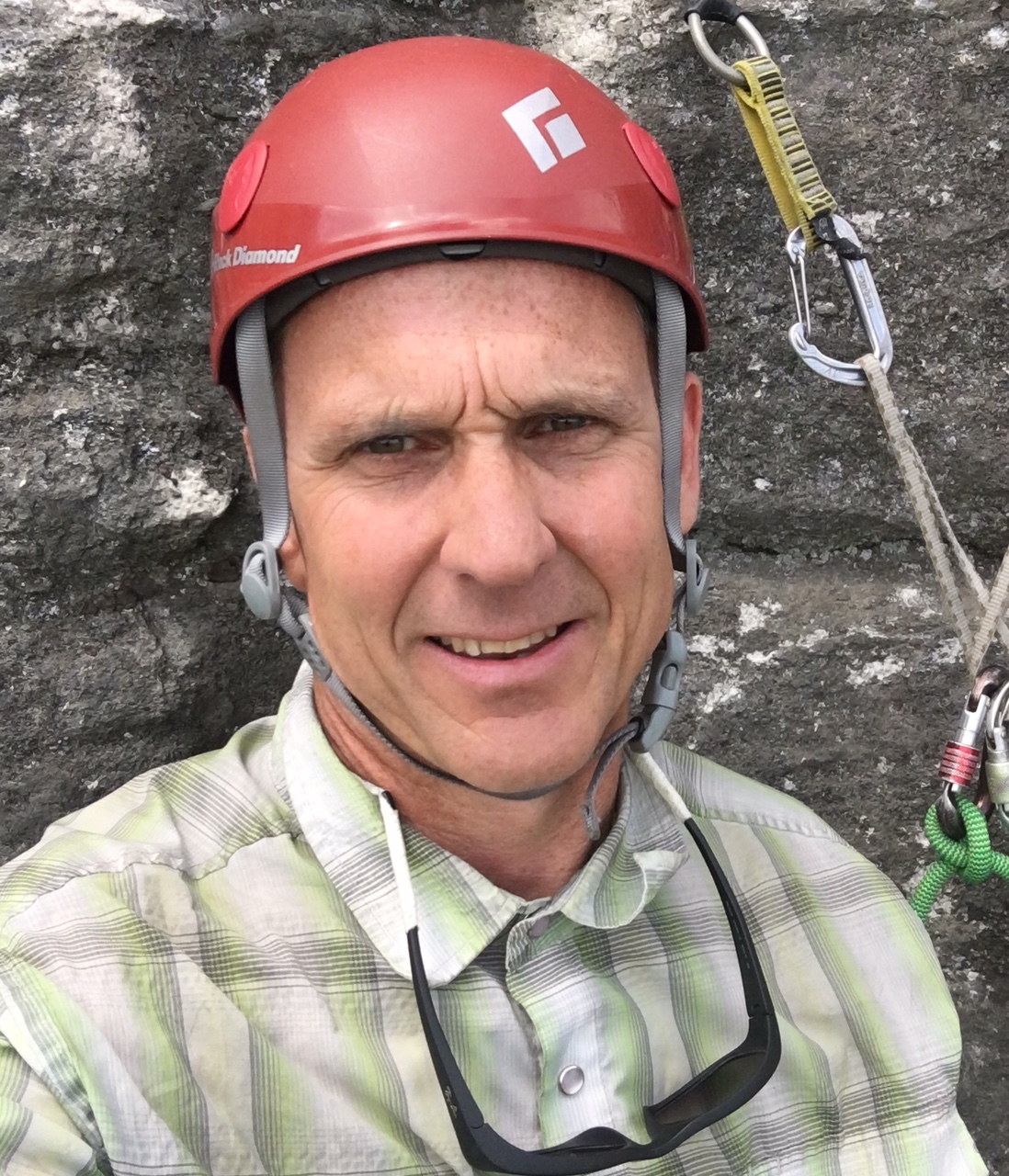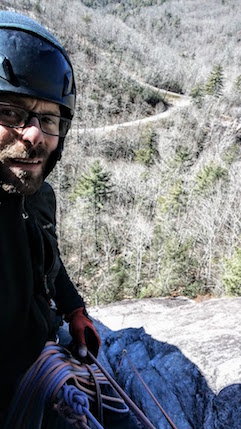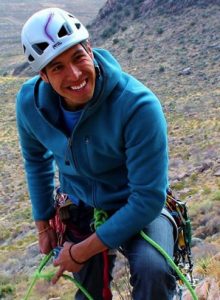Mount Mills, and a reflection on the Guiding Life
 Reprinted with permission from Ryan Huetter’s blog.
Reprinted with permission from Ryan Huetter’s blog.
Victoria’s eyes were as big as dinner plates as I belayed her in. We had just transitioned from short roping to pitching out the steepening terrain as the couloir we were ascending narrowed, and to more securely pass the exposed band of rock bisecting the route which a recent heat wave in the alpine country had melted out. Al, her partner, followed a few meters behind. When they both arrived at the belay, we all three looked up towards the forking junctions of the many gullies splitting the East Face of Mount Mills (13,468 ft), eyeing our route that would take us towards the summit plateau.
“Welcome to Mountaineering!”
Victoria and Al signed up for a four-day trip that would encompass snow and rock skills, and an overnight, culminating climb in the high mountains. Both experienced hikers, they sought to increase their comfort on steep snow. With Rock Creek plowed high, we were able to ascend all the way to a bench above Mills Lake at 12,000 ft, snowshoeing in over the still frozen lakes before digging in and setting up our lightweight shelters below the Blood Moon.
These types of trips (introductory mountaineering) are often the most difficult to guide. Not for the terrain difficulty, but due to the fine line you must walk when delivering the curriculum. Some come on trips just for a guided experience, with an assumption that they will never do it again; other come to build a skill set for themselves which they can take and build on later. Keeping everybody engaged and rewarded can be a challenge, especially on higher ratio trips. That both Vick and Al came eager to learn and ready to ask questions helped to facilitate a more productive learning (and teaching) environment for the group. When this uniform level of engagement doesn’t exist, it’s important to have the tools to get everyone involved, and especially to not place more importance on the needs of the strongest individuals.
As we climbed past the rock bands, and began moving together again through the steep snow weaving through the final gully towards the ridge, the snow pack became thinner and the rock walls offered less opportunity for protection. We continued our ascent, but slower and with more DT (discreet tension). Movement coaching and speed can be excellent substitutes for solid protection in certain terrain, and can imply the need for caution without saying outright, “This is pretty hairy, don’t blow it here!”
Upon reaching the wind-lipped ridge, I anchored myself on the other side and belayed Victoria and Al in.
Especially on introductory mountaineering or climbing courses, it is usual to choose climbing objectives which allow the participants to use the skills they have just learned, and to challenge them a bit. So the necessity of being transparent and openly talking through your decision making process and how and why you are making your risk management plan is great. Operating too mechanically, without giving rationale behind your actions, you risk giving your participants a skewed view of your thought process. With mountain climbing, and rock climbing too, application (using the right tool at the appropriate time), has a direct effect on safety and efficiency.
At the top of the ridge, below the last rock step, we stopped and talked through the decisions which had gotten us to this point. Explaining the difference between how I had managed the last few hundred feet as a guide versus how I would have climbed it with a friend was an important conversation to have, and answered some of the questions which arose on the ascent. We made our way over to the slender summit ridge and sat for a bit enjoying our moment in the sun before returning our attention to the down climb.
I lowered Vick and Al down the rock steps, down climbing after them, and with the sun softened snow we were able to descend much more securely and quickly than on the way up. Snow has a way of making itself feel very steep on the way up, as when you lean into the snow to lessen your exposure it gives you the feeling of a higher angle, but on the way down it loses some of its bite.
A well deserved cup of afternoon coffee was enjoyed back in camp, as we packed up our belongings and began the long walk back to the road. The high springtime sun was wreaking havoc on the snow pack, and postholing with snowshoes became an all too common theme.
Vick and Al headed north to another wilderness adventure, while I returned to Mammoth to put some ice on my knees!
With each trip completed, it is quite easy to become complacent and to treat each trip format the same. During the height of the summer guiding season the emphasis is too easily shifted towards what high gravity IPA I’ll reward myself with before the next day brings new guests and a new objective.
So after every trip, I am trying to put more emphasis on reflecting on the job that I did, how it could be improved upon in the future, where the biggest potential for risk occurred, and with the benefit of hindsight, how I might have managed things differently, but more importantly, looking at the before and during instead of just the past.
By taking the time to reach out to guests before the trip starts to answer questions and get a sense of their aspirations can help make it their ideal trip instead of mine, and by taking a few minutes each night while logging the day’s events in my notebook to evaluate the trip, the guests, and myself, I still have time with which to improve the outcome of the trip.
While these learnings have been sometimes hard won, and have been a culmination of lots of good, some great, and a few downright horrible trips and adventures in the mountains, I feel they are worth sharing, whether you are a friend, a client or a fellow guide. And knowing that you are doing your best to provide the safest and most rewarding experience makes that double hopped elixir that I just picked up at the Manor Market that much tastier!












